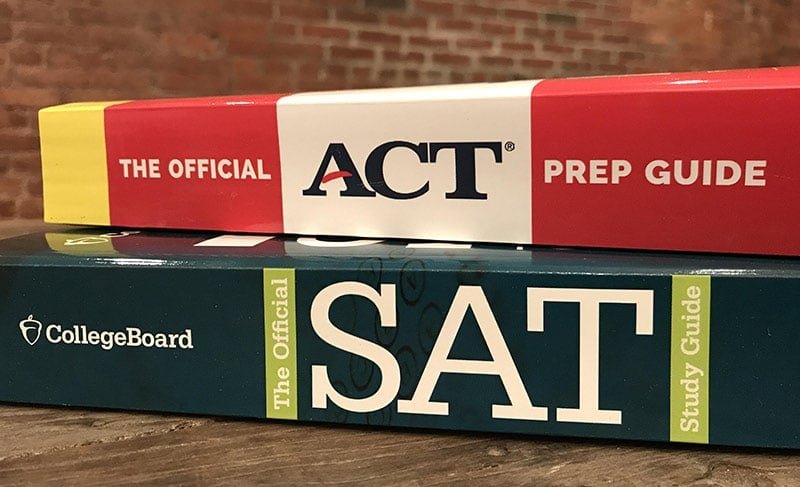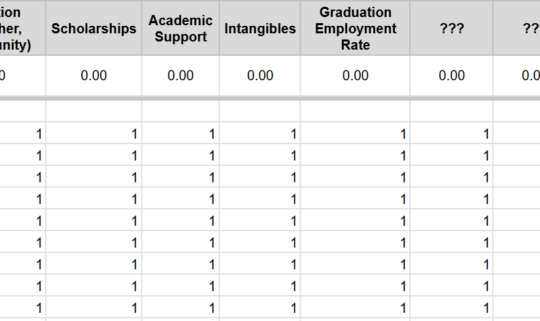“My child is in his/her junior year. Tell me what I need to know about SAT / ACT testing.”
I receive this question, or variations of it, every year. Today, I will guide you through the steps to consider as you prepare for standardized tests used in college admissions.
What You Need to Do
Current juniors should expect to send ACT or SAT scores to colleges during their senior year. This is the year to keep working on good grades, challenging classes, meaningful involvement, and standardized testing.
If you take care of the SAT / ACT this year, you can focus on your applications and essays next summer. Here are the steps you should take:
Step 1: ACT or SAT?
Your first step is to determine which test best suits your strengths, weaknesses, and testing preferences.
Colleges don’t care which test a student takes. The ACT and SAT are equally acceptable. One won’t look better or give you a leg up in admissions. (No, the science section of the ACT will not make you a stronger STEM applicant!)
This is a key decision. Don’t skip this step!
High school students are busy. They have limited time and don’t want to waste effort on one exam only to find out they should have been studying for the other test all along.
The advice to take both the ACT and SAT is based on the idea that some students perform better on one test than the other. This suggestion aims to ensure that all options are covered. However, by following the steps outlined here, you can save on registration fees and time by concentrating on the exam that suits you best. For example, my kids took only one of the tests.
How to decide—
1. Ignore all the testing stereotypes you’ve probably heard. “This test is better for…” or “If you are good at math and science you should…”
2. Gather data for a legitimate comparison. You want to compare results from a full-length ACT and full-length SAT. (Do NOT take the actual exam for this step!)
If you took the PSAT and Pre-ACT at school last year, you could use your results. If you did not, then I recommend that you take test prep with many of the companies that provide test prep. In the past, Revolution Prep has been my go-to test prep company. Give them a look and see!
3. Once you have scores from both tests, you are ready to compare. You can use a score conversion chart to evaluate your results. If you are noticeably better on one test than the other, your choice is obvious.
4. If your results are comparable and one is slightly higher than the other, but only by a bit, you can consider other factors. Which test did you prefer? Did the timing or organization of one test feel better? If they are still equal in your mind, you can pick either one. Some high schools offer ACT testing to all juniors! Best to take advantage of that opportunity.
Step 2: When?
Both tests are given multiple times during the year. You want to test when you have the most time to prepare (and possibly the most motivation to do so.)
I usually start by identifying time-consuming activities:
- Extracurriculars (sports season, competitions, shows, etc.)
- Academics (AP exams, end-of-semester projects/tests)
- Other challenges (spring break travel, scheduled medical procedures, etc.)
I don’t recommend students focus on the May exams because, by the end of the school year, even the best students are exhausted. You can plan to retake the exam in June if needed.
Step 3: How Will You Prepare?
Once you know which test and which test date, you can make plans to prepare. Do NOT take the test “cold” to get a baseline score!
This is the time to use the many resources that are available to you. Practice tests at both ACT and SAT (College Board), test prep services, or study guides. I recommend test prep. Many companies offer weekend test prep to students and will provide them with a score at the end! Some companies provide 30-minute sessions to help students understand their scores and where they could improve. Over the past 3 years, I have worked with Revolution Prep to assist students I have worked with. The results and feedback from the students have been awesome. I highly recommend them – the test prep is free.
At a minimum, students should take two full-length practice tests as practice. Both SAT and ACT offer “Official Guides” that contain practice tests, answers, and explanations.
Be honest with yourself when deciding how to prepare. Are you normally the one who studies ahead of time, even if there isn’t an immediate deadline? Can you typically figure out why you are missing questions? Or do you do better when someone sets a clear schedule and checks in on your progress for accountability? Do you learn better if you work with a group of friends or by yourself?
Typically, students will need 6-8 weeks to fully prepare for the ACT / SAT. The more aggressive your score goal, the more time you will need. It is possible to cram for the test in 2 to 3 weeks, but there are limits to how much you can learn and improve in a shorter period.
Step 4: Take the Test
Unless your school has made an agreement with ACT or College Board to administer the exam during the school day, you will need to register to take your test on the Saturday national administration.
Register early because the deadline is a few weeks before each exam.
Prepare. Get good rest and take your test. Scores are usually available 2-4 weeks after your exam.
Step 5: What’s Your Retest Plan?
In an ideal world, students would take the test once, make their dream scores, and be done. That doesn’t always happen.
Most students take their exam of choice 2-3 times. Colleges always use your best scores and because you won’t automatically send scores when you take the test, you can control what each school on your list sees.
There are many factors to consider when deciding whether to retake the SAT or ACT. Currently, very few schools make SAT or ACT scores mandatory for admissions, but most colleges will use your score to help them give out academic scholarships.
The important thing is to have a retest plan. When will you be able to take the test again? What test dates won’t work based on your school, extracurricular, and family schedule?
Conclusion
Junior year is the time to take the SAT / ACT. You don’t need both tests, so it is advisable to spend a little time determining which test is best for you. Never take the actual exam just for practice; there are plenty of official practice tests you can use. Some students can effectively study on their own, but others will benefit from a class or private tutoring.






